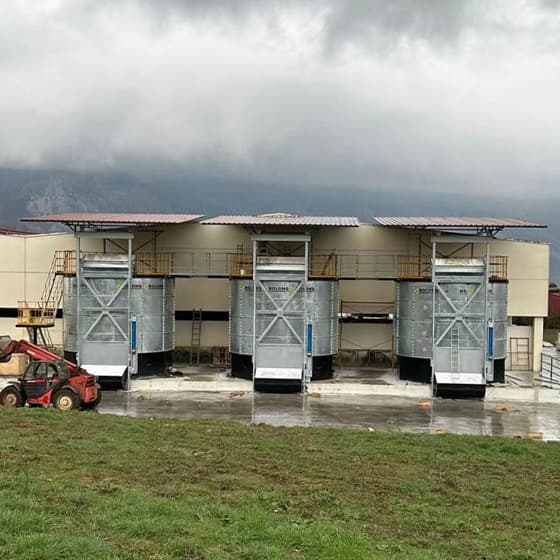Introduction
Innovative fermentation tank designs are revolutionizing waste management in agriculture by improving efficiency, scalability, and sustainability. This article explores cutting-edge design concepts and their potential to enhance fermentation tank performance.

Vertical Fermentation Towers
- Space Efficiency:
Vertical fermentation towers utilize vertical space more efficiently, allowing for higher waste processing capacity within a smaller footprint. Vertical design minimizes land requirements and enables installation in urban or confined environments.
- Gravity-Driven Flow:
Gravity-driven flow systems optimize waste circulation and aeration within vertical towers, promoting efficient microbial activity and waste decomposition. Gravity flow eliminates the need for mechanical pumps, reducing energy consumption and maintenance costs.
Floating Fermentation Platforms
- Modular Construction:
Floating fermentation platforms consist of modular pontoons or rafts equipped with fermentation tanks, allowing for flexible layout configurations and easy expansion. Modular construction facilitates scalability and adaptability to changing farm needs.
- Water-Based Cooling:
Water-based cooling systems integrated into floating platforms regulate fermentation tank temperatures by circulating water from the surrounding environment. Water-based cooling reduces energy consumption and maintains optimal fermentation conditions.
Subsurface Bioreactors
- Underground Installation:
Subsurface bioreactors are installed underground to minimize visual impact and land disturbance while providing efficient waste treatment. Underground placement reduces odor emissions and enhances aesthetic appeal.
- Enhanced Insulation:
Subsurface bioreactors benefit from natural insulation provided by surrounding soil, maintaining stable temperatures for microbial activity. Enhanced insulation reduces heating and cooling requirements, resulting in energy savings.
Aeroponic Fermentation Chambers
- Aeroponic Spraying:
Aeroponic fermentation chambers utilize aeroponic spraying systems to deliver nutrients and moisture directly to microbial colonies growing on solid substrates. Aeroponic spraying promotes efficient nutrient uptake and waste decomposition.
- Controlled Environment:
Aeroponic chambers maintain a controlled environment with optimized temperature, humidity, and nutrient levels to maximize microbial activity and fermentation efficiency. Controlled conditions accelerate waste decomposition and biogas production.
Conclusion
Innovative fermentation tank designs such as vertical fermentation towers, floating platforms, subsurface bioreactors, and aeroponic chambers offer promising solutions for enhancing efficiency, scalability, and sustainability in agricultural waste management. By embracing cutting-edge design concepts, farms can optimize waste processing and resource recovery while minimizing environmental impact.
